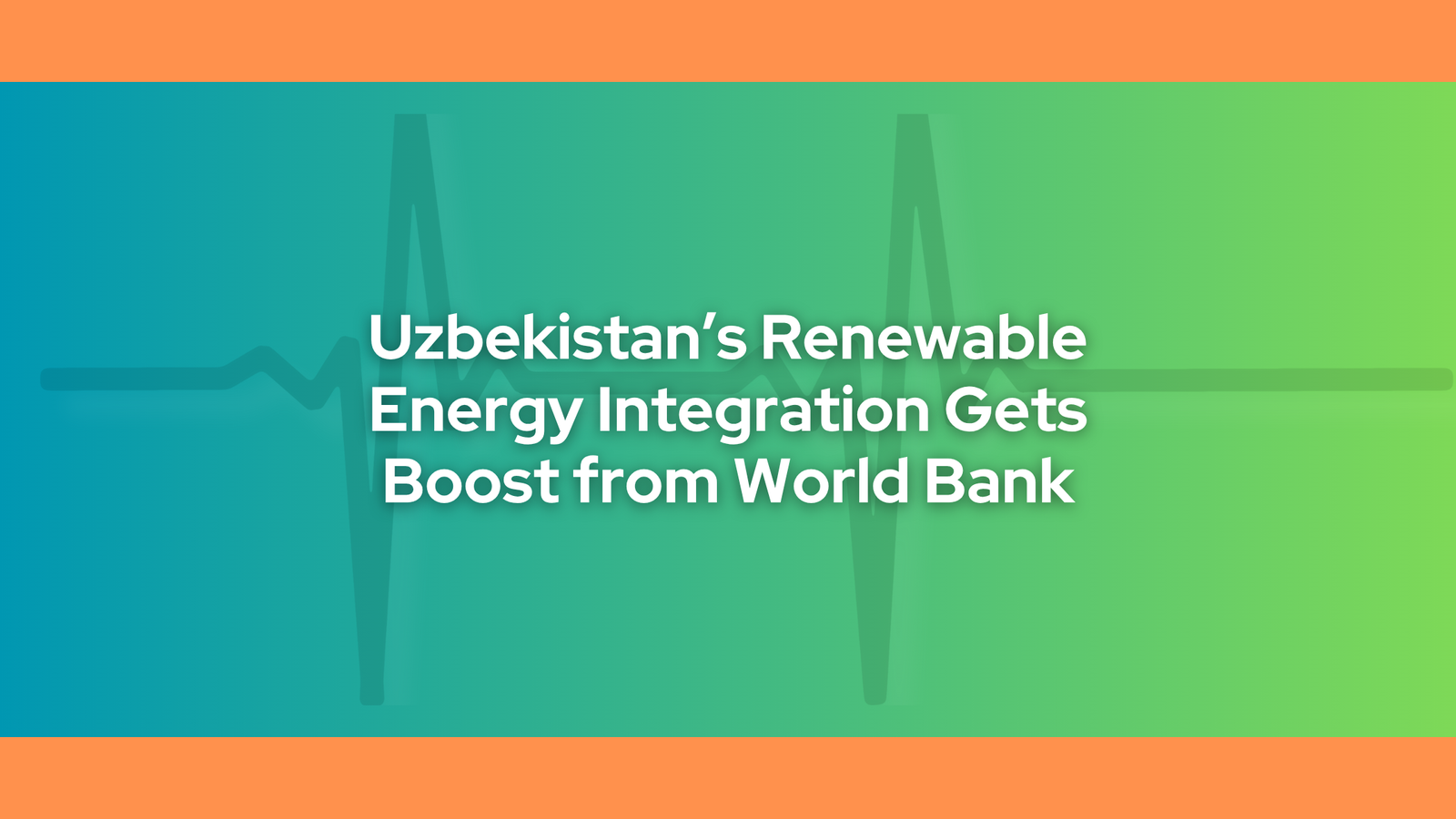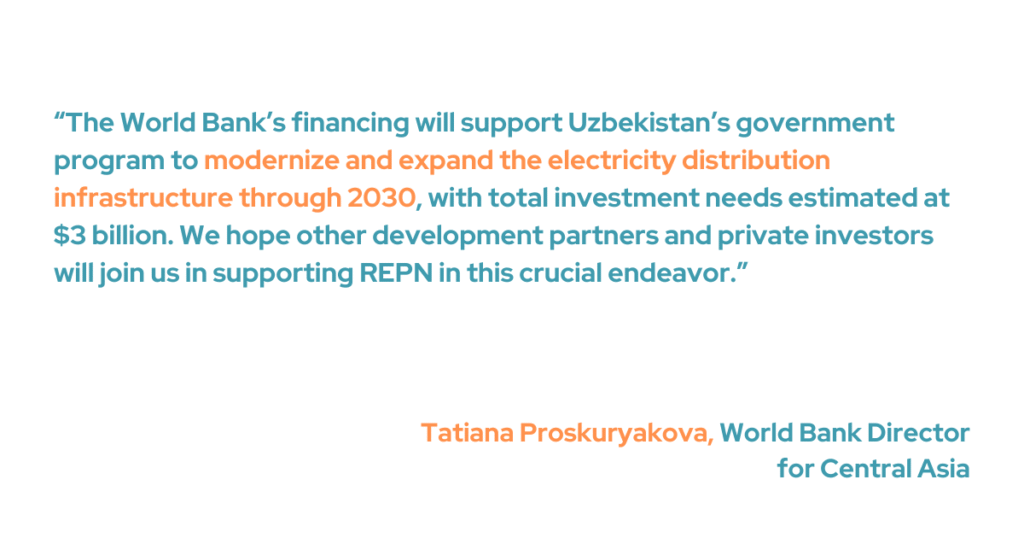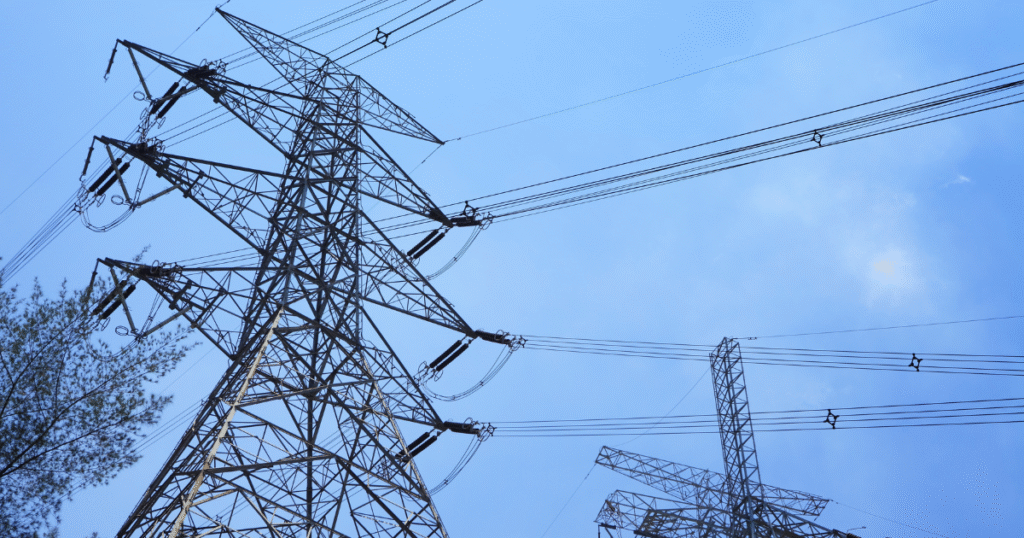
According to The Times of Central Asia, by 2035, the energy demand in Uzbekistan will almost double at 1.7 times, reaching 135 billion kilowatt-hours. This is due to a projected increase in the population, which is estimated to rise toward 41 million, and the economy, which is expected to grow 1.5 times. With this increasing demand, Uzbekistan’s renewable energy integration into its electricity distribution network needs a major overhaul.
On May 15, 2025, the country is taking a major leap toward sustainable development through modernizing and digitizing its electricity distribution network. The World Bank approved a $100 million concessional credit to support the country’s efforts in strengthening Uzbekistan’s renewable energy integration into its distribution network. This initiative will also increase the energy supply reliability in priority regions. The Regional Electric Power Networks (REPN) of Uzbekistan will also co-finance $50 million.

The improvement of renewable energy integration comes at a perfect time for Uzbekistan. Aside from modernization and energy reliability, this initiative proves that Uzbekistan is actively addressing the impacts of climate change. According to the climate profile of the Asian Development Bank, Uzbekistan’s average temperature could rise by 4.8°C by the end of this century. Moreover, the government also intended to increase the share of renewable energy to 50% of total energy consumption by 2030, according to reports.
Uzbekistan’s electricity distribution network’s facilities have been operational for more than 30 years and are the main culprit of the country’s technical distribution losses. These losses are estimated to be more or less 13% as of 2024. Operating for more than three decades is beyond these infrastructures’ operational lifespan; add to that the overloading, which both lead to frequent power outages.
In alignment with the government’s goals, Uzbekistan needs emergency investment to fund the modernization of its distribution networks and deploy 25 gigawatts of renewable production by 2030. These upgrades are needed so that the current power system can handle the anticipated increase in renewable energy.
Tatiana Proskuryakova, World Bank Director for Central Asia, said that “The World Bank’s financing will support Uzbekistan’s government program to modernize and expand the electricity distribution infrastructure through 2030, with total investment needs estimated at $3 billion.” She expresses her hope that other private investors and development partners will join us in helping REPN with this important undertaking.

Uzbekistan’s energy sector also suffers from large economic losses, especially in distribution networks. This puts a huge financial strain on the government. To boost profitability and draw in private investment, the authorities are reworking the distribution system’s financial and operational models to guarantee long-term viability.
Over the next five years, Uzbekistan will update its electrical distribution infrastructure with $150 million in combined funding from the World Bank and REPN. This will help improve Uzbekistan’s renewable energy integration sources and increase supply reliability in strategic areas like Surkhandarya and the Republic of Karakalpakstan. Upgrades will include installing 4,000 concentrators to support future automation and digitalization of the network and replacing or installing 1,200 distribution transformers with a combined capacity of 250 MVA. Other improvements also include connecting 150,000 smart meters to minimize electricity losses and constructing and modernizing 6,000 km of low-voltage lines.
Through the creation of a new distribution planning methodology, enhancing processes for linking distributed renewable energy, and the improvement of corporate governance and financial planning, the program will also make investments to boost REPN’s operational and financial capability.
This project also wants to reduce annual greenhouse gas emissions by up to 450,000 tons of CO₂, increase distribution capacity to incorporate up to 50 megawatts of renewable energy from families and SMEs, and achieve a 90% customer satisfaction rating by 2029. The initiative also aims to promote greater gender inclusion in the energy sector by raising the percentage of women in technical and managerial jobs at REPN from 9% in 2025 to 14%.